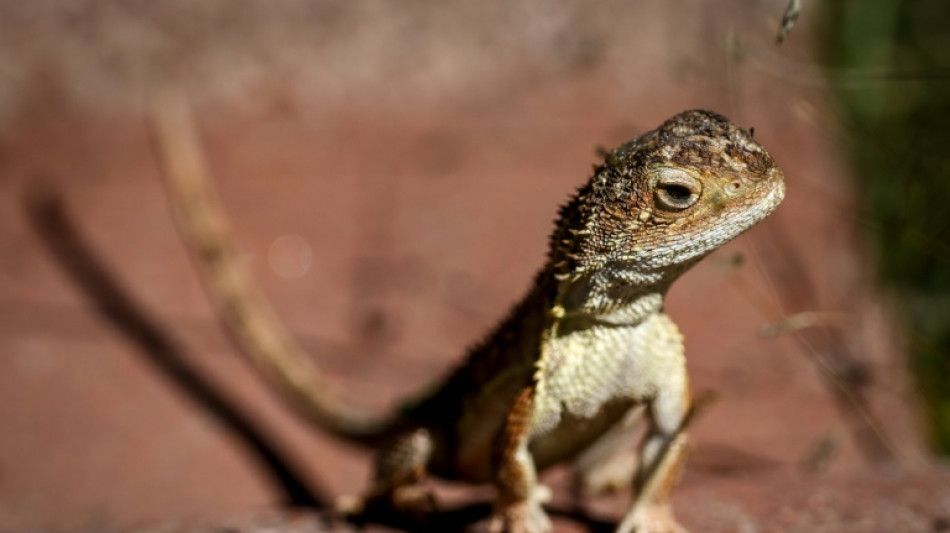
-
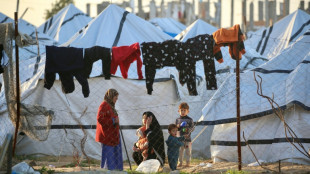 Israel confirms ban on 37 NGOs in Gaza
Israel confirms ban on 37 NGOs in Gaza
-
Russia blames Ukraine for deadly New Year drone strike
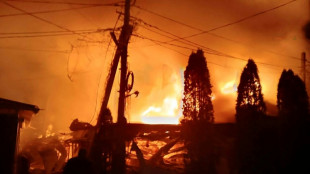
-
 Coach Maresca leaves Chelsea - club
Coach Maresca leaves Chelsea - club
-
'Several dozen' believed killed in fire at Swiss ski resort New Year party

-
 China's BYD logs record EV sales in 2025
China's BYD logs record EV sales in 2025
-
Yemen separatists say Saudi-backed forces to deploy in seized territories

-
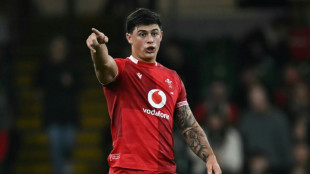 Wales rugby star Rees-Zammit signs long-term deal to stay at Bristol
Wales rugby star Rees-Zammit signs long-term deal to stay at Bristol
-
'Several dozen' believed killed in fire at Swiss ski resort New Year bash
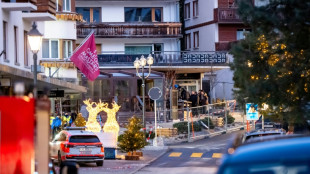
-
 Hakimi, Salah and Osimhen head star-packed AFCON last-16 cast
Hakimi, Salah and Osimhen head star-packed AFCON last-16 cast
-
Israel says it 'will enforce' ban on 37 NGOs in Gaza

-
 Near record number of small boat migrants reach UK in 2025
Near record number of small boat migrants reach UK in 2025
-
Several dead as fire ravages bar in Swiss ski resort town Crans Montana: police

-
 Tsitsipas considered quitting tennis during injury-hit 2025
Tsitsipas considered quitting tennis during injury-hit 2025
-
Sabalenka wants 'Battle of the Sexes' rematch and revenge

-
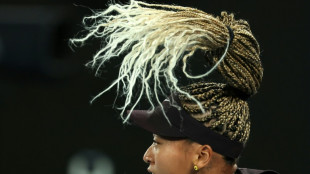 Osaka drawing inspiration from family at United Cup
Osaka drawing inspiration from family at United Cup
-
Leftist Mamdani takes over as New York mayor under Trump shadow

-
 Israel's Netanyahu among partygoers at Trump's New Year's Eve fete
Israel's Netanyahu among partygoers at Trump's New Year's Eve fete
-
Champagnie, Wemby lead Spurs comeback in Knicks thriller
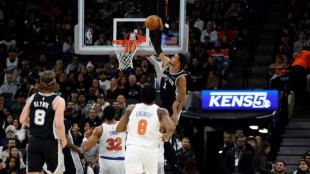
-
 Eight dead in US strikes on alleged drug boats: US military
Eight dead in US strikes on alleged drug boats: US military
-
Trump joins criticism of Clooney's French passport

-
 AI, chips boom sent South Korea exports soaring in 2025
AI, chips boom sent South Korea exports soaring in 2025
-
Taiwan's president vows to defend sovereignty after China drills

-
 N. Korea's Kim hails 'invincible alliance' with Russia in New Year's letter
N. Korea's Kim hails 'invincible alliance' with Russia in New Year's letter
-
In Venezuela, price of US dollar up 479 percent in a year

-
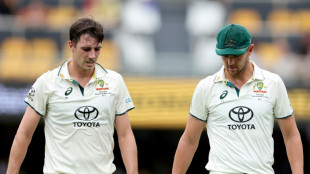 Cummins, Hazlewood in spin-heavy Australia squad for T20 World Cup
Cummins, Hazlewood in spin-heavy Australia squad for T20 World Cup
-
Ex-boxing champ Joshua discharged from hospital after fatal car crash
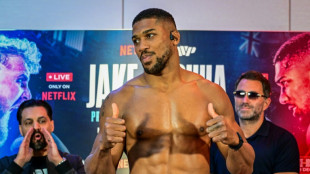
-
 SUPCASE Unveils Its 2026 Brand Evolution: Lighter in Form, Stronger in Purpose
SUPCASE Unveils Its 2026 Brand Evolution: Lighter in Form, Stronger in Purpose
-
The EPOMAKER RT82: Where Retro Meets Modern Technology

-
 Zelensky says deal to end war '10 percent' away
Zelensky says deal to end war '10 percent' away
-
Trump bashes Clooney after actor becomes French

-
 We are '10 percent' away from peace, Zelensky tells Ukrainians
We are '10 percent' away from peace, Zelensky tells Ukrainians
-
Trump says pulling National Guard from three cities -- for now

-
 Ivory Coast top AFCON group ahead of Cameroon, Algeria win again
Ivory Coast top AFCON group ahead of Cameroon, Algeria win again
-
World welcomes 2026 after a year of Trump, truces and turmoil

-
 Ivory Coast fight back to pip Cameroon for top spot in AFCON group
Ivory Coast fight back to pip Cameroon for top spot in AFCON group
-
Second Patriots player facing assault charge
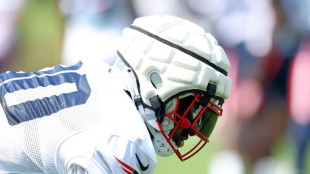
-
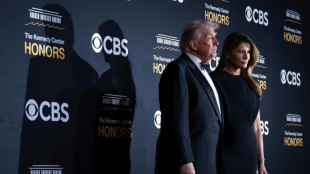 Trump-hosted Kennedy Center awards gala ratings plummet
Trump-hosted Kennedy Center awards gala ratings plummet
-
Israel begins demolishing 25 buildings in West Bank camp

-
 Cambodian soldiers freed by Thailand receive hero's welcome
Cambodian soldiers freed by Thailand receive hero's welcome
-
Sudan lose to Burkina Faso as Algeria win again at Cup of Nations

-
 Man City's Rodri and Doku could return against Sunderland
Man City's Rodri and Doku could return against Sunderland
-
French minister criticises Clooney's 'double standard' passport

-
 Ukrainians wish for peace in 2026 -- and no more power cuts
Ukrainians wish for peace in 2026 -- and no more power cuts
-
Glasner coy over Palace pursuit of Spurs striker Johnson

-
 Neville labels Man Utd's draw with Wolves 'baddest of the bad'
Neville labels Man Utd's draw with Wolves 'baddest of the bad'
-
Stocks pull lower at end of record year for markets

-
 France plans social media ban for children under 15
France plans social media ban for children under 15
-
Mbappe suffers knee sprain in blow for Real Madrid

-
 Putin wishes Russians victory in Ukraine in New Year speech
Putin wishes Russians victory in Ukraine in New Year speech
-
Iran government building attacked as top prosecutor responds to protests

| SCS | 0.12% | 16.14 | $ | |
| AZN | -0.63% | 91.93 | $ | |
| RBGPF | -0.37% | 80.75 | $ | |
| VOD | -0.15% | 13.21 | $ | |
| BTI | 0.12% | 56.62 | $ | |
| GSK | -0.53% | 49.04 | $ | |
| RIO | -0.61% | 80.03 | $ | |
| BCE | 1.05% | 23.82 | $ | |
| NGG | -0.54% | 77.35 | $ | |
| CMSC | -0.15% | 22.65 | $ | |
| RYCEF | 0.13% | 15.51 | $ | |
| CMSD | 0.09% | 23.15 | $ | |
| JRI | 0.22% | 13.61 | $ | |
| RELX | -1.71% | 40.42 | $ | |
| BP | -0.06% | 34.73 | $ | |
| BCC | -0.26% | 73.6 | $ |

Australia battles to save last 11 wild 'earless dragons'
Australia's grassland earless dragon is no bigger than a pinkie when it emerges from its shell, but the little lizard faces an enormous challenge in the years ahead: avoiding extinction.
As recently as 2019, scientists in Canberra counted hundreds of grassland earless dragons in the wild. This year, they found 11.
In other areas of the country, the lizard has not been seen for three decades.
The earless dragon -- which is light brown and has long white stripes down its body -- measures about 15 centimetres (the size of a US$1 bill) when fully grown.
It lacks an external ear opening and functional eardrum, hence the name.
Australia has four species of earless dragons. Three are critically endangered, the highest level of risk, while the fourth is endangered.
The critically endangered dragons will likely be extinct in the next 20 years without conservation efforts.
"If we properly manage their conservation, we can bring them back," said University of Canberra Professor Bernd Gruber, who is working to do just that.
- Breeding programmes -
Australia is home to thousands of unique animals, including 1,130 species of reptiles that are found nowhere else in the world.
Climate change, invasive plants and animals, and habitat destruction -- such as the 2019 bushfires, which burned more than 19 million hectares (46 million acres) -- have pushed Australia's native species to the brink.
In the past 300 years, about 100 of Australia's unique flora and fauna species have been wiped off the planet.
To save the earless dragons there are several breeding programmes under way across Australia, including a bio-secure facility in Canberra's bushlands, which Gruber is overseeing.
On shelves are dozens of tanks that house the lizards –- one to each container –- with a burrow, grass and heat lamps to keep them warm.
The biggest problem is matchmaking, with the territorial female lizards preferring to choose their mates.
This means that scientists must introduce different male lizards to the female until she approves.
If that was not hard enough, scientists must also use genetic analysis to determine which lizards are compatible together and ensure genetic diversity in their offspring.
At any one time, the breeding programmes around Australia can have up to 90 earless dragons, which will eventually be released back into the wild.
At the moment, Gruber is looking after more than 20 small lizards that have just hatched. Scientists almost missed the tiny eggs until three weeks ago.
"There is a sense of hope looking over them," he told AFP.
- Habitat destruction -
Despite the efforts of scientists, the lizards are contending with a shrinking habitat and a changing climate.
Australian Conservation Foundation campaigner Peta Bulling said the lizards only live in temperate grasslands, most of which have been destroyed by urban development.
Only 0.5 percent of grasslands present at the time of European colonisation still exist.
Without the lizards, Australia's alpine grasslands could look vastly different.
"We don't understand everything the grassland earless dragons do in the ecosystem, but we can make guesses they play an important role in managing invertebrate populations. They live in burrows in the soil, so they are probably aerating the soil in different ways too," she told AFP.
Bulling said that while it was important to bring the lizard back, it was also vital to protect their habitats, without which the newly saved lizards would have nowhere to live.
"They are highly specialised to live in their habitat but they will not adapt quickly to change," she said.
Last year, scientists rediscovered a small number of another kind of earless dragons after 50 years in an area that is being kept secret for conservation reasons.
Resources are being poured into understanding just how big that population is and what can be done to protect it.
O.M.Souza--AMWN



